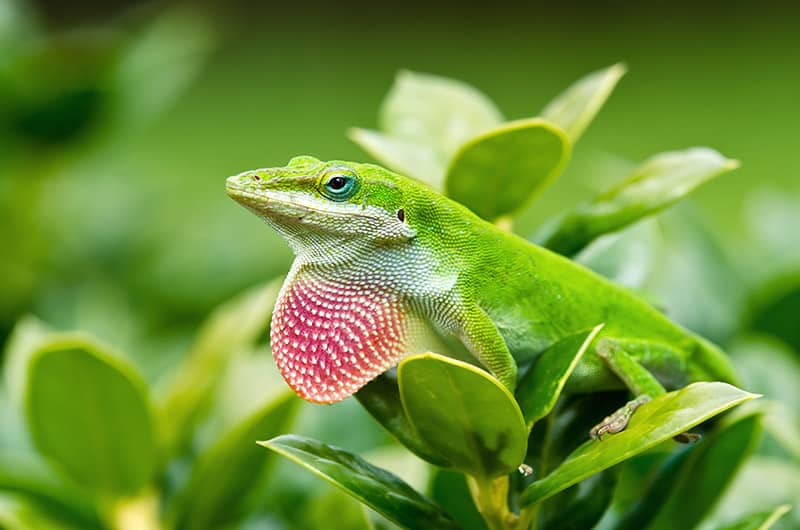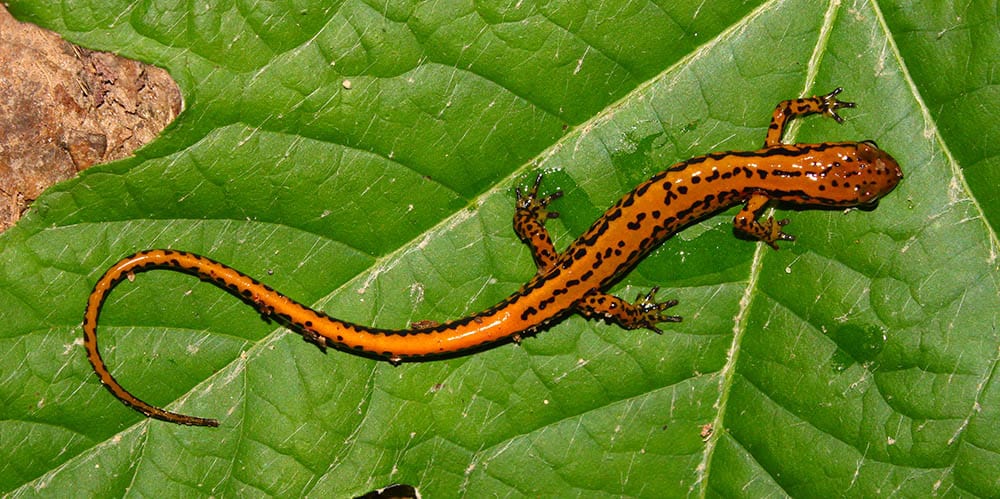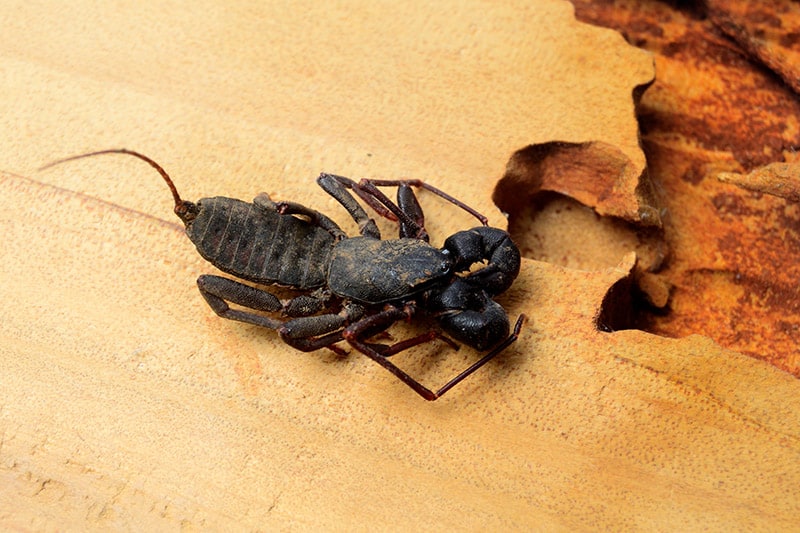Reptiles and arthropods are ancient inhabitants of our planet, evolving as many as 350 million years ago!
The wondrous diversity of these many creatures has intrigued and fascinated people since the beginning of time. The reptiles, amphibians, and land invertebrates found in the animal world demonstrate an infinite variety of shapes, patterns, colors, and habitats. Learning about them is an exciting adventure.
Our list of reptiles includes many types of lizards, snakes, different types of turtles, and tortoises. Amphibians include frogs, toads, salamanders and newts. Arthropods cover the arachnids, like spiders, tarantulas, scorpions and whip scorpions: myriapods containing centipedes and millipedes; and other land invertebrates. Each guide offers species information with their backgrounds, habitat, behaviors, and care. Pictures in each guide can help in choosing a pet or aid in identification.
Reptiles – Amphibians
| – Agamid lizards, lizard species guides for the Agama types of lizards, facts and caresheets for keeping them as pets, photos of Agamas. | – Amphibian species facts, history and characteristics, Amphibian list of Frogs, Toads, Salamanders and Newts with guides containing facts, Pictures, and pet care for each |
| – Myriapod Species Guides, Centipede and Millipede facts and Pictures, the difference between a centipede and millepede, and how to keep them as pets. | – Lizard species guides for the Chameleons and Pygmy Leaf Chameleons, facts and lizard care for pet chameleons, chameleon images. |
| – Gecko lizard species guides, gecko facts and information, lizard care for pet geckos and gecko pictures. | – Iguanid lizards, species guides for different types of Iguanas, facts and information, Iguana care and Iguana pictures. |
| – Species guides for all types of scorpions, scorpion facts and pictures, and keeping scorpion species as pets. | – Species Guides for all types of snakes with snake facts and background, snake care for keepimg pet snakes, and snake pictures |
| – Species guides for tarantulas and tree spiders, tarantula facts and pictures, keeping tarantula species as pets. | |
| – Guides for Helodermatidae lizard species, Gila Monster and Mexican Beaded Lizard, lizard facts and information, pictures of poisonous lizards. | |
| – Species guides for Whip Scorpions. Tailless Whip Scorpions (Whip Spiders), and Short-tailed Whip Scorpions with facts, pictures, pet care and handling. |
Reptiles – Amphibians Features
Latest Reptiles – Amphibians Fact Sheets
| Green Iguana Green Iguana, Iguana iguana, Giant Green Iguana Facts and Care | |
| Amphibians Amphibians, Species List and Guides, Frogs, Toads, Salamander, Newt | |
| Centipede CareCentipede and Millipede Care, Keeping Myriapods as Pets | |
| Land Invertebrate Care Land Invertebrate Care, Keeping Arachnids and Other Arthropods as Pets | |
| Selecting Your Snake Pet Snakes, Choosing a Snake, Snake Care for All Types | |
| Selecting Your Lizard Pet Lizards, Choosing a Lizard, Lizard Care for all Types of Lizards |
Guest Article Contributions Welcome!
Red Eyed Tree Frog
About Reptiles, Amphibians and Arthropods
Reptiles, amphibians and land invertebrates are extremely ancient creatures, and have been a part of many culture’s folklore for many generations. A good example is the snake. Snakes gained an evil reputation in their depiction in the Garden of Eden, yet they have also become a symbol of health, hygiene, and medicine, as depicted by the snake entwined around the Greek god of healing, Aesculapius.
In natural science, amphibians and reptiles are bundled together as the study of Herpetology, which is a branch of Zoology. Collectively they are known as herps, herptiles, or herpetofauna. The term “herpetology†is derived from the Greek word “herptonâ€, meaning a creeping thing.
Herptiles are vertebrates and include both reptiles and amphibians. The animal world is inhabited with approximately 58,000 species of vertebrates, which seems like a lot, yet is only about 3% of all animal species. Invertebrates make up the bulk of the animals at 97% of the species. The arthropods are land invertebrates and include the arachnids (scorpions, whip scorpions, and tarantulas), centipedes, millipedes, and many others.
In more recent times, keeping these amazing animals as pets has seen an explosion of interest. The number of both professional and amateur herpetologists is greatly increasing. This has been helped by improvements in communications and the growing interest in wildlife, impassioned by ever improving nature films and documentaries. This interest has continued to develop and grow the hobby, and has resulted in an increased knowledge of breeding techniques and general herptile care.
The ultimate reward for both the animal world and humanity, is people equipped with knowledge and the ability to help maintain and possible save many endangered species from extinction.

Keeping Reptiles, Amphibians and Arthropods as Pets
Keeping reptiles, amphibians, and land invertebrates is a fascinating hobby, and has many advantages over other types of pets. The terrarium requires very little space and can be an aesthetically pleasing showpiece. A terrarium with plants, mosses, driftwood, and rocks brings a touch of nature into a city centered home or apartment. These creatures are generally quiet, clean, odorless, and non-demanding. Once the terrarium is setup, the cleaning and maintenance chores are minimal. Most species do not need feeding everyday, which is a distinct advantage during holidays.
Animal-World species guides are provided for reptiles and amphibians, collectively known as herptiles, and land invertebrates like spiders, tarantulas, scorpions and more, collectively known as antrhopods. These guides help with identification and the care of individual species. A beginner will learn about herptiles and arthropods, be able to set up a terrarium, and obtain healthy animals. They will learn to be able to keep them successfully, and may even breed them.
Each guide has in-depth species information covering everything from their native place of origin and when first scientifically described, the habitats and behaviors of each species, and the care needed to keep them as a pet. Pictures for each type of reptile, amphibian, or land invertebrate are provided within each guide. These not only help with species identification, but aid in choosing the right pet.
Reptile Facts

Reptiles are a group of vertebrates with over 8225 species and are found in all regions of the world except for Antarctica. They are characterized as ectothermic (cold-blooded) vertebrates that breathe, and their skin is covered with scales and/or scutes. Most reptiles are oviparous (egg-laying) animals with the exception of some ovoviviparous (live-bearing) constrictor snakes and vipers. An ovoviviparous reptile holds the eggs inside its body until they hatch and then the living young are delivered.
Reptiles are members of the Reptilia class, which include four living orders as well as fossil groups like the dinosaurs.
- Squamata
The order Squamata includes the lizards, snakes and worm lizards and has about 7,900 species - Testudines
The order Testudines includes the turtles, terrapins and tortoises with about 300 species - Crocodilia
The crocodilians in the order Crocodilia include the crocodiles, gavials, caimans, and alligators. There are 23 species - Sphenodontia
The tuataras from New Zealand are in the order Sphenodontia with just 2 species. The Reptilia class also includes fossil groups like the dinosaurs.
It is estimated to have been during the Carboniferous period, about 320-310 million years ago, that the first reptiles evolved from advanced reptile-like amphibians.
Amphibian Facts

Amphibians are characterized as ectothermic (cold-blooded) tetropods (vertebrate animals that have four limbs) with non-terrestrially adapted eggs. Most have a life cycle moving from a water-breathing juvenile form with gills, to an adult air-breathing form. There are some, however, that retain the juvenile gills into adulthood, and remain in this state for their entire lives.
Amphibians are a relatively small group of vertebrates with over 6500 species. They belong in the class Amphibia which includes three orders.
- Anura
Frogs and toads are of the order Anura - Caudata
Newts and salamanders are of the order Caudata. - Gymnophiona
The lesser-known limbless caecilians of the order Gymnophiona superficially resemble earthworms or snakes and mostly live hidden in the ground.
Frogs, toads and salamanders have been creeping along on the earth for millions of years before humans evolved. It is estimated to be about 350 million years ago that the first fishes came out of the water onto the land and evolved into the first amphibians.
Arthropod Facts

The land invertebrates included here are all arthropods, and members of the Phylum Arthropoda. Arthropods are invertebrate animals. They have an exoskeleton (external skeleton), a segmented body, and jointed appendages. Within the Arthropoda Phylum, they are classed as follows:
Arachnids
The Arachnids include the tarantulas, scorpions and the whip scorpions, more commonly called vinegaroons or vinegarroons. They are all members of the Arachnida class of joint-legged invertebrate animals in the subphylum Chelicerata. All arachnids have eight legs, and almost all are terrestrial. A few, however, inhabit freshwater and marine environments as well. Arachnids comprise over 100,000 named species including spiders, scorpions, harvestmen, ticks, mites and Solitude.Tarantulas
Tarantulas are spiders in the order Araneae. They are air-breathing arthropods that have eight legs, and chelicerae with fangs that inject venom. They are the largest order of arachnids
Anatomically, spiders differ from other arthropods in that the usual body segments are fused into two tagmata, the cephalothorax and abdomen, and joined by a small, cylindrical pedicel. Unlike insects, spiders do not have antennae.Scorpions
Scorpions belong in the the order Scorpiones. These arthropods have eight legs and are distinguished by the pair of grasping claws and a thin segmented tail. The tail arches forward over the back with a venomous stinger on the end. They range in size from and incredibly small .35 of an inch (8.5 mm) up to 8.33 inches (21 cm). Scorpions are predatory animals found on all continents except Antarctica. There are about 1,752 described species.Whip Scorpions
Whip Scorpions
These are arachnids in the order Thelyphonida, and are commonly referred to vinegaroons, or vinegarroons. The name whip scorpions came about because most of them resemble true scorpions due to their whip-like tails. Thelyphonids were previously in the Uropygi order, so in the scientific community they are also often called Uropygids. Whip Scorpions range mostly between 1 to 3 1/3 inches (25 – 85 mm) in length and are not as big as the largest of the scorpions.Short-tailed Whip Scorpions
These are smaller soft-bodied arachnids in the order Schizomida. Schizomids superficially resemble spiders. They are also similar to Whip Scorpions in appearance but are much smaller, generally less than 1/5th of an inch (5 mm) in length.Tailless Whip Scorpions, Whip Spiders
Tailless Whip Scorpions are arachnids in the order Amblypygi, and are often called Whip Spiders. The term “amblypygid” means “blunt rump”, which relates to their lack of a tail like that found on the Whip Scorpions, or Thelyphonids. The body of the Amblypygid’s are broad and flat, with a solid carapace and a segmented abdomen. They have large, rather pincher-like pedipalps for grabbing prey. Despite their appearance, Tailless Whip Scorpions are totally harmless to humans.
Myriapods
The Myriapods are “many legged” arthropods containing nearly 13,000 species. They have bodies that are elongated and segmented. Each segment has a pair of legs, or appendages, and like insects their appendages have only one branch, or ramus. The number of appendages can vary from fewer than ten to nearly 200 pairs of legs. Myriapods are terrestrial, and most live in humid environments. They are found in soils, leaf litter, or under stones and wood. Most species have specialized glands, repugnatorial glands, that secrete a foul-tasting substance, and function as a defense.Centipedes
The Centipedes are members of the Chilopoda class of invertebrates in the subphylum Myriapoda. They are elongated metameric invertebrates with one pair of legs per body segment. The number of legs varying by species, from under 20 to over 300. There are estimated to be about 8,000 species of centipedes.Centipedes are carnivores and are unique in that they have “forcipules”, a pair of venom claws formed from a modified first appendage. Some centipede species can be hazardous to humans because of their bite, Although the bite is painful, it is unlikely to be fatal to an adult. But it can be dangerous to children or those allergic to bee stings, and could induce anaphylactic shock in such people.
Millipedes
The Millipedes are members of the Diplopoda class of invertebrates in the subphylum Myriapoda. this class contains about 10,000 species. Most millipedes have very elongated cylindrical bodies, segmented with two pairs of legs per segment. However they have no legs on the first segment behind the head, and then only one pair of legs on the next few segments, but two pairs of legs per segment after that. These are mostly slow moving detritivores, that feed on decaying leaves and other dead plant matter.
Other Arthropods
Other land invertebrates like the Hissing Cockroach, are members of the Insecta class, and are within the Phylum Arthropoda
Featured Image Credit: Ken Griffiths, Shutterstock













